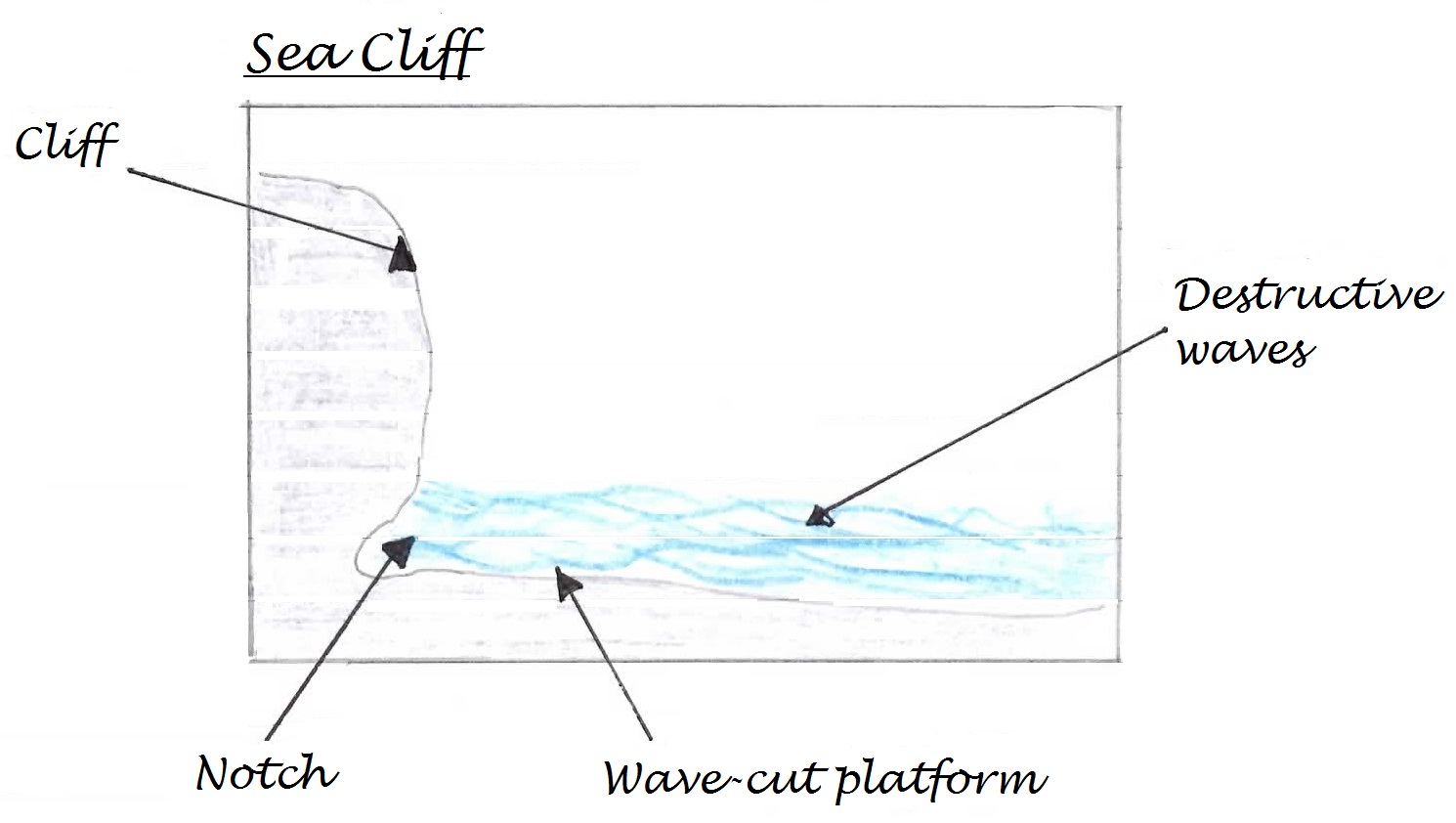Question
- Junior Cert. Geography (Higher) 2014: Section 2 Q4
- Back to the question >
Answer
(ii) Coasts
A cliff is a feature formed by coastal erosion. A cliff is an area of steeply sloping rock found along the coast. Destructive waves erode a notch in the base of the cliff by hydraulic action. Hydraulic action is the force of the water. Over time continued undercutting at the base of the rock causes the notch to get bigger. As the notch gets bigger, the rock above it becomes unstable and collapses forming a cliff. The waves use these pieces of rock to further erode the cliff face. This process of erosion is called abrasion. As a result of erosion, the cliff begins to retreat. A level area of rock is left at the base of the cliff as it retreats. This is called a wave-cut platform. A good example of cliffs are the Cliffs of Moher in Co. Clare.

A cliff is a feature formed by coastal erosion. A cliff is an area of steeply sloping rock found along the coast. Destructive waves erode a notch in the base of the cliff by hydraulic action. Hydraulic action is the force of the water. Over time continued undercutting at the base of the rock causes the notch to get bigger. As the notch gets bigger, the rock above it becomes unstable and collapses forming a cliff. The waves use these pieces of rock to further erode the cliff face. This process of erosion is called abrasion. As a result of erosion, the cliff begins to retreat. A level area of rock is left at the base of the cliff as it retreats. This is called a wave-cut platform. A good example of cliffs are the Cliffs of Moher in Co. Clare.

